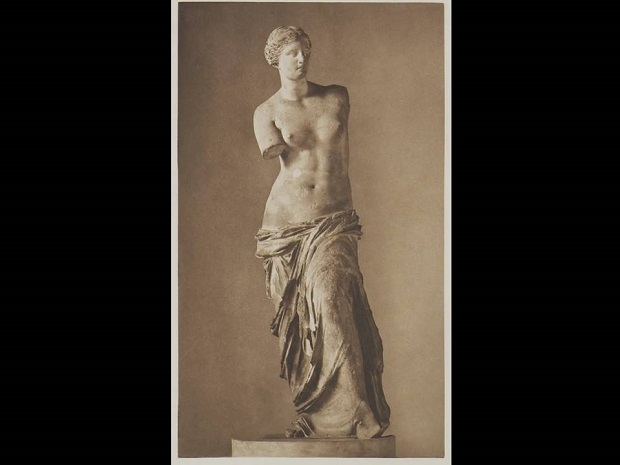Let's see below five of the most important works of ceramic art that have defined the history of clay until today:
-
The "Disc of Phaistos": This ancient ceramic work of art, found at the Egyptian archaeological site of Knossos, is one of the best-known examples of Mycenaean art. The disk is decorated with rich graphic decoration and is one of the first known "paintings" in archaeology.

Their interpretation of the Discus, the best-known Minoan syllabic inscription from the Bronze Age, which dates to the 17th c. BC, "500 years before the Trojan War", is that it is "a hymn to the pregnant deity and the deity Aphaia". Let us remember that the Disk was discovered in a small room of the palace of Phaistos, in 1908, by the Italian excavators of the monument, while today it is a valuable exhibit of the Archaeological Museum of Heraklion. It is of clay, 16 cm in diameter, and bears 45 different symbols, or writing points, as Dr. Owens corrects, which are repeated and grouped to form words. The writing points, 242 in all, were stamped when the clay was still fresh. For this reason the Phaistos Disc, intact to this day, is considered the oldest known type of typography
-
The "Venus of Milos Painting": This archaeological work was found in Milos and is one of the most classic depictions of Venus. The sculptural simulation of the body and the sensual representation of the work make it one of the masterpieces of ancient art.

It was discovered in 1820 in the Turkish-occupied Milos and since 1821 it has adorned the Louvre Museum in Paris. A creation of the Late Hellenistic Period (end of the 2nd century BC), the 2.02 m high and 900 kg marble statue depicts the goddess of beauty and love half-naked, wearing only the robe tied around her hips. The two missing arms must have been destroyed either during excavation or during transport.
-
The "Krater of Kleitias": This impressive ceramic work, dating to the 6th century BC, is a huge vase-shaped krater decorated with illustrated scenes from the mythological world and depicting a battle between Greeks and Amazons .
The krater of Kleitias or the vase of François is an archaeological find housed in the Archaeological Museum of Florence . It is one of the most important artifacts of ancient Attic pottery and vase art. He was found by the Italian Alessandro Francois in 1844 in a tomb in Chiusi, Italy. It was used to mix wine with water before drinking.
-
The " Camaraian vases of Crete": These vases, characterized by their extremely fine and detailed decoration, are one of the most remarkable finds of Mycenaean art.

The epithet "kamaraikos" comes from the place where the first large group of these vessels was found in Crete, the cave of Kamaras on the southern outskirts of Psiloritis mountains.The pottery experienced enormous growth in the Middle Minoan and Late Minoan periods ( 1900-1650 BC). , and wonderful examples of it were found at Knossos and Phaistos. The vessels they are decorated with depictions of flowers and leaves, but mainly sea animals, such as octopuses, cuttlefish, newts and various fish. So great was the demand for Cretan vases on the coasts of the Aegean, that in the Late Minoan period their manufacture became a true industry and many of its products reached the Egypt, the Syria and the rest Greece, where they were found in the excavations.
-
The "Crater of Euphronius": Dated to the 5th century BC, it is one of the most impressive examples of ancient Greek art. The famous "Crater of Euphronius" depicts scenes from everyday life.

It was found in December 1971 by antiquarians in an Etruscan tomb in Cerveteri, Italy , and was purchased by the Metropolitan Museum of Art in New York from Robert Hecht , an antiquities dealer, in November 1972 for $1.2 million. In 2008 he was returned (repatriated) to Italy following a court order. Today it is exhibited in the National Etruscan Museum in Rome.
It is a red-figure vase with two images inspired by ancient Greek mythology. The obverse shows the scene of the death of Sarpedon, son of Zeus: Sleep and Death are lifting him, while Hermes is between them, two armed men stand on either side of the scene. The reverse depicts three Athenian youths donning their weapons.


